Top Customer Experience Insights for 2024
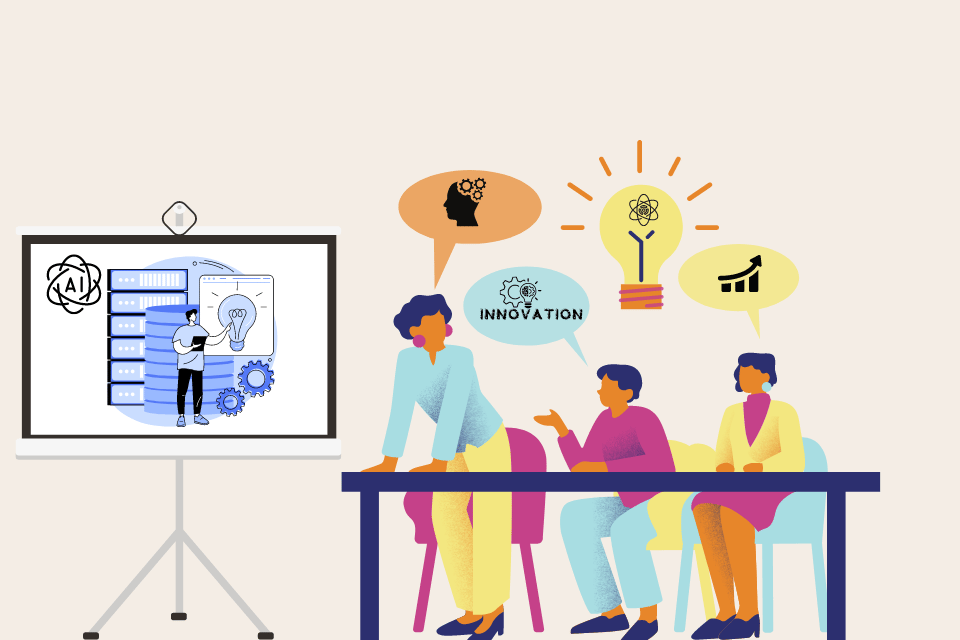
What's the secret to attracting new customers?
Many businesses still believe it's all about the superior quality of their offerings.
While that may have held true in the recent past, it's no longer the primary factor driving customer decisions.
In today's market, the real differentiator is delivering an exceptional customer experience.
Customer Experience in the Metaverse: Preparing for Virtual Engagement
In a recently conducted survey of 2,000 business leaders, they were asked to pinpoint their top priority for the coming half-decade.
The results were clear:
Customer experience (CX) claimed the top spot - outranking both product and pricing for the third consecutive time.
It's no wonder that customer experience has become the top priority for businesses today. The numbers tell a compelling story:
Research by the Temkin Group reveals that companies with annual revenues of $1 billion can expect to see an average increase of $700 million within just three years of investing in customer experience. For SaaS companies, the potential is even more staggering, with projections suggesting revenue growth of up to $1 billion.
These aren't just incremental gains – we're talking about the potential to double your revenue through strategic CX investments.
But where does this massive revenue boost come from?
Why Is Customer Experience Important?
It starts with customer willingness to pay a premium for superior experiences. An overwhelming 86% of consumers are ready to pay more for great customer experience. This trend is even more pronounced in the luxury sector, where customers are willing to pay up to 13-18% more for high-end products and services that come with exceptional CX.
Moreover, improved customer experience drives immediate sales. Nearly half of all buyers (49%) have made impulse purchases after receiving a more personalized experience. This highlights the power of CX in not just fostering long-term loyalty, but also in driving short-term sales growth.
Perhaps the most telling statistic is this: 81% of organizations now view CX as a key competitive differentiator. In other words, if you're not prioritizing customer experience, you're already falling behind.
As we look ahead to 2024, understanding these CX trends is crucial for staying competitive. At SuperOffice, our extensive work with B2B sales, marketing, and customer service teams has given us unique insights into consumer expectations and behaviors. We've seen firsthand how a focus on CX can transform businesses across industries.
So, what exactly is customer experience?
What is Customer Experience (CX)?
At its core, customer experience encompasses every interaction a customer has with your brand, from their first awareness to post-purchase support. It's about how they perceive your company based on these interactions, and how these perceptions shape their behavior and loyalty.
The key to delivering outstanding CX lies in truly understanding your customers. This means investing in long-term relationship building, collecting and analyzing customer data, and using these insights to personalize interactions across the entire customer journey.
While this level of customer understanding requires significant effort and investment, the payoff is clear. Improved customer experience consistently leads to higher retention rates, increased customer satisfaction, and substantial revenue growth.
As we move into 2024, businesses that prioritize CX will be best positioned to thrive in an increasingly competitive landscape. By focusing on creating meaningful, personalized experiences at every touchpoint, companies can build lasting customer relationships that drive sustainable growth and success.
How can you optimize customer journeys?
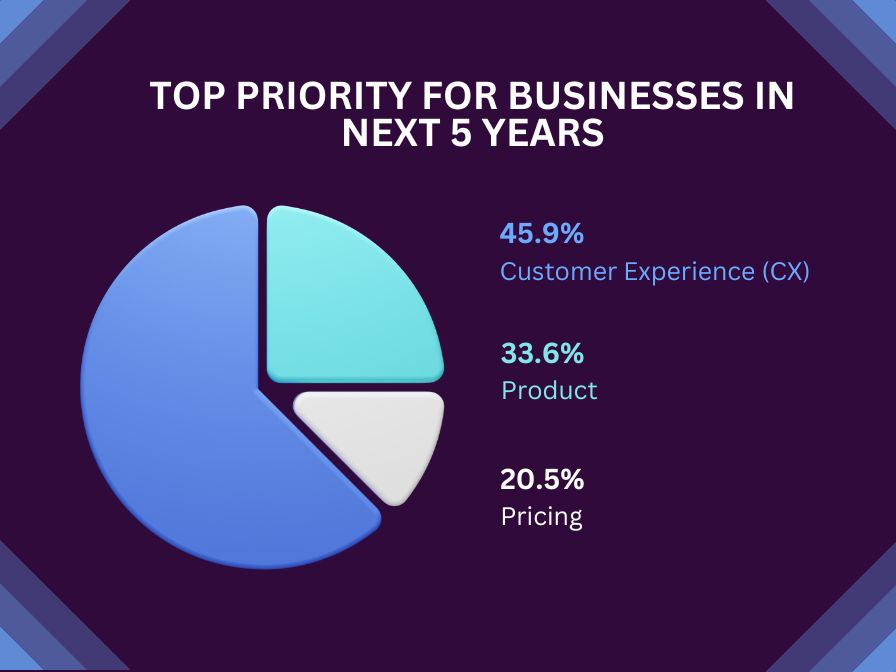
How can you create a positive customer experience? Let's explore the key trends shaping CX in 2024.
The Psychology of Great Customer Experiences: Science-Backed Strategies
Customer Experience: The New Competitive Frontier
In today's market, poor customer service can be a death knell for businesses. The way customers feel after interacting with your company, especially through customer service channels, profoundly impacts their future purchasing decisions. A positive interaction breeds loyalty and satisfaction, while a negative one can lead to customer churn.
This reality has led to a seismic shift in business priorities. An overwhelming 88% of companies now place customer experience at the forefront of their contact center strategies. The reason is clear: customer experience has become the primary battleground for winning and retaining business.
Enhancing Customer Experience: Strategic Insights for C-Suite Executives
The numbers tell a compelling story. More than two-thirds of companies now compete primarily on the basis of customer experience – a dramatic increase from just 36% in 2010. This shift underscores a fundamental truth in today's business landscape: to stand out, you must deliver exceptional experiences.
Investing in CX is no longer optional; it's a critical business imperative. However, there's a concerning gap between recognizing this importance and taking action. Research reveals that only 44% of organizations plan to increase their investment in CX initiatives in the coming year.
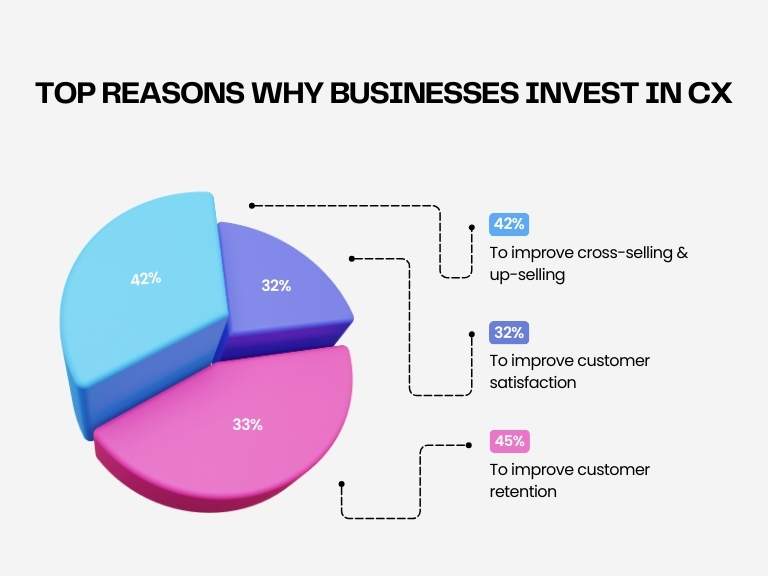
This disparity presents both a challenge and an opportunity. For companies willing to prioritize and invest in CX, there's a significant competitive advantage to be gained. Those who lag behind in CX investment risk losing market share to more customer-centric competitors.
As we move into 2024, successful businesses will be those that not only recognize the importance of CX but also commit resources to improve it. This means investing in technology, training, and processes that enhance every customer touchpoint. From AI-powered chatbots that provide instant support to personalized marketing campaigns that speak directly to individual customer needs, the possibilities for CX innovation are vast.
Emotional AI: Understanding and Responding to Customer Sentiments
Moreover, creating a positive customer experience isn't just about implementing new technologies. It requires a cultural shift within organizations, placing the customer at the center of all decision-making processes. This customer-centric approach should permeate every department, from product development to marketing to customer service.
Companies that successfully navigate this new CX-focused landscape will reap significant rewards. They'll enjoy higher customer retention rates, increased customer lifetime value, and a stronger brand reputation. In an era where customers have more choices than ever before, delivering exceptional experiences is the key to standing out and fostering long-term business success.
How Generative AI is Transforming Customer Service
As we look ahead, it's clear that customer experience will continue to be the defining factor in business success. Companies that recognize this trend and invest accordingly will be well-positioned to thrive in the competitive landscape of 2024 and beyond.
Navigating the Path to Effective CX Investment
With customer experience becoming increasingly crucial, the question arises: where should you focus your CX investments for maximum impact?
Gartner's research provides a clear starting point: successful CX initiatives begin with a robust system for collecting and analyzing customer feedback. This insight-driven approach is the foundation of effective CX strategy.
But what does this look like in practice?
First, consider implementing a diverse range of feedback collection methods. This might include:
- Customer surveys: Both post-interaction and periodic surveys can provide valuable insights.
- Web forms: Easily accessible on your website for customers to share thoughts at their convenience.
- Net Promoter Score (NPS) programs: A simple yet powerful tool to gauge customer loyalty and satisfaction.
- Social media monitoring: Capture unsolicited feedback and broader sentiment.
- Customer interviews: For in-depth, qualitative insights.
However, collecting data is just the first step. The real value lies in how you analyze and act on this information. Here's a strategic approach:
- Aggregate and categorize feedback: Use AI-powered tools to categorize comments, suggestions, and opinions into actionable themes.
- Identify patterns and trends: Look for recurring issues or desires across your customer base.
- Prioritize initiatives: Based on the frequency and impact of customer concerns, prioritize your CX projects.
- Set clear metrics: Establish KPIs for each initiative to measure success.
- Implement changes: Roll out improvements based on your prioritized list.
- Monitor and iterate: Continuously collect feedback on your changes and be prepared to refine your approach.
It's crucial to remember that effective CX isn't about guesswork or following industry trends blindly. It's about listening to your specific customers and tailoring your approach to their unique needs and expectations.
The Impact of Bad Customer Experience on Businesses
Moreover, this process should be ongoing. Customer expectations evolve rapidly, especially in our digital age. Regular feedback collection and analysis ensure you stay ahead of changing customer needs.
Investing in CX this way not only improves customer satisfaction but can also lead to significant business benefits. Companies that excel in customer experience see higher customer retention rates, increased customer lifetime value, and often benefit from positive word-of-mouth marketing.
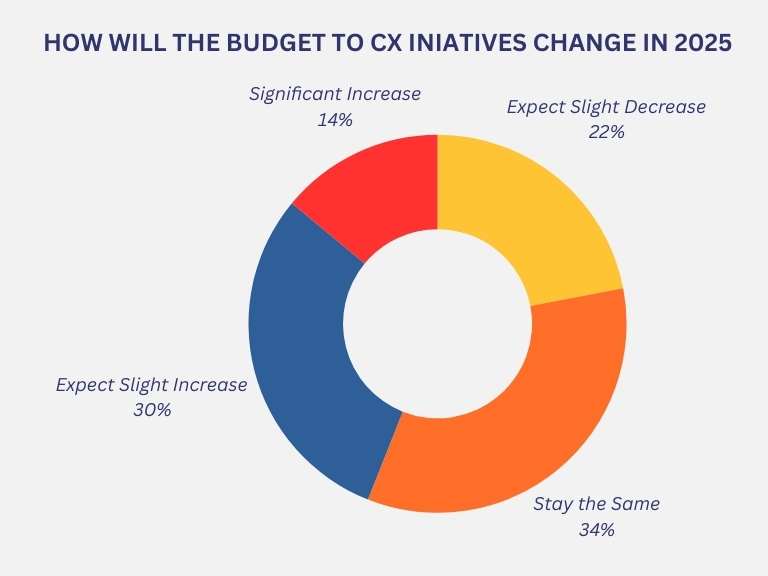
As we move into 2024, the companies that will thrive are those that not only invest in CX but do so strategically, basing their decisions on solid customer insights. By starting with a robust feedback system and following through with targeted improvements, you can create a customer experience that truly sets your business apart.
The Rise of Omnichannel Customer Service
Modern customers are active across a multitude of platforms, and they expect businesses to meet them wherever they are. This shift has forced companies to adapt, interacting with customers through various channels including website forms, live chat, social media, mobile apps, and more. However, the challenge lies not just in being present on these platforms, but in providing a seamless, consistent experience across all of them. This is the essence of omnichannel customer service.
Omnichannel goes beyond multi-channel by ensuring that the customer experience remains consistent and complementary across all touchpoints. It's not just about being everywhere; it's about being coherent everywhere.
Omnichannel Marketing: The Role of Digital Experience Platforms
A prime example of successful omnichannel strategy is IKEA. The Swedish furniture giant has masterfully created a uniform experience whether you're browsing their website, using their app, or walking through one of their iconic stores. IKEA's commitment to customer experience is evident in their strategic investments:
- Expanding their physical store network
- Enhancing their home delivery capabilities
- Launching a comprehensive, user-friendly app
This dedication to omnichannel excellence has paid off handsomely. IKEA has not only cultivated a devoted global customer base but has also seen its annual revenues soar to over $40 billion worldwide.
IKEA's success story is not an isolated case. More companies are recognizing the power of a well-executed omnichannel strategy.
A retailing report by PwC revealed a staggering increase in companies investing in omnichannel experiences - from a mere 20% to more than 80%. This dramatic jump underscores the growing understanding of omnichannel's importance in modern business.
As we look towards 2024, the trend towards omnichannel is only set to accelerate. Here's what businesses should consider:
- Integration is key: Ensure all your channels are interconnected, allowing for seamless customer data flow.
- Consistency is crucial: Maintain a uniform brand voice and service quality across all platforms.
- Personalization at scale: Use data from various touchpoints to create personalized experiences, regardless of the channel.
- AI and automation: Leverage these technologies to provide instant, consistent responses across channels.
- Mobile-first approach: With the growing dominance of mobile devices, ensure your omnichannel strategy prioritizes mobile experiences.
- Employee training: Equip your team with the skills to provide consistent service across all channels.
The shift towards omnichannel is not just a trend, but a fundamental change in how businesses interact with customers. As customer expectations continue to evolve, companies that can provide a seamless, integrated experience across all touchpoints will be the ones that thrive.
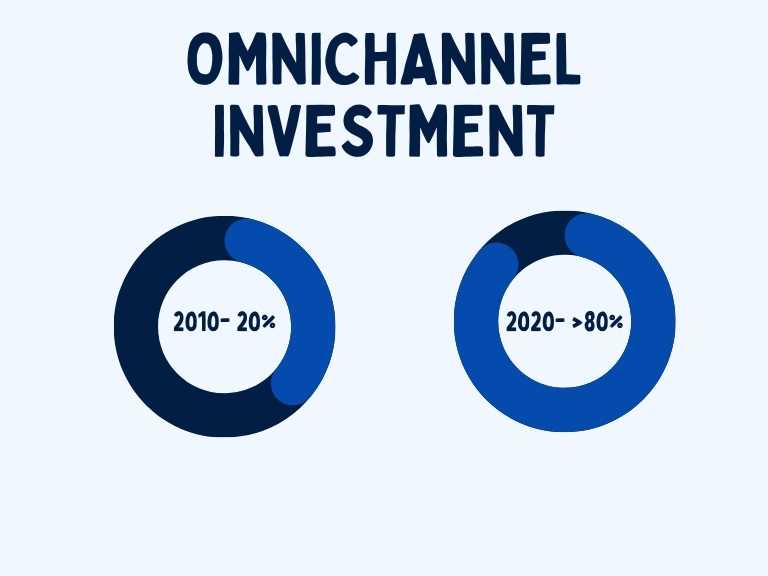
In 2024 and beyond, successful businesses will be those that view omnichannel not as a separate initiative, but as an integral part of their overall customer experience strategy. By doing so, they'll be well-positioned to build stronger customer relationships, increase loyalty, and drive sustainable growth in an increasingly competitive marketplace.
Mobile Customer Experience Takes Center Stage
The impact of a subpar mobile experience on a brand can be severe. Research shows that 57% of customers won't recommend a business with a poorly designed mobile website. Even more striking, 50% of customers will cease visiting a website that isn't mobile-friendly, regardless of their fondness for the business itself.
Turning Customer Surveys into Action: A Step-by-Step Guide
These statistics underscore the critical role mobile experience plays in business growth and customer retention.
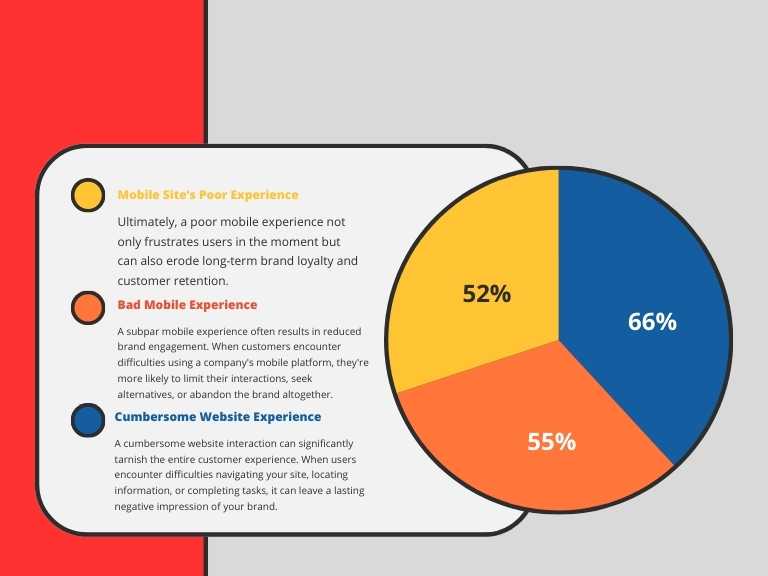
The importance of mobile experience is no longer up for debate. It's now considered a fundamental element of delivering great customer experiences. This shift is driven by changing user behaviors, with Statista reporting that 59% of all global internet traffic now comes from mobile devices.
Recognizing this trend, 84% of companies that identify as customer-centric are now prioritizing the mobile customer experience. Many businesses using popular CMS platforms like WordPress or HubSpot have tools at their disposal to optimize for mobile, addressing issues like spacing and text size.
However, there's still a significant gap in mobile customer support. A staggering 90% of customers report poor experiences when seeking support on mobile devices. The most frequent complaints center around navigation difficulties, ineffective site search functions, and slow load times.
Why You Should Improve Customer Experience
This disparity between customer expectations and current mobile experiences represents a critical area for improvement. When customers struggle to navigate a website or find the information they need, frustration ensues, often leading to customer loss.
As we move forward, it's clear that prioritizing mobile customer experience isn't just a nice-to-have – it's a business imperative. Companies that fail to adapt to this mobile-first world risk alienating a significant portion of their customer base and hindering their growth potential.
Customer Frustration: A Direct Path to Churn
Customer experiences, both positive and negative, have a ripple effect. Research by Esteban Kolsky reveals that 72% of satisfied customers will share their positive experiences with 6 or more people. However, the impact of dissatisfaction is even more pronounced - 13% of unhappy customers will voice their complaints to 15 or more individuals.
Crisis Management in the Age of Instant Feedback: Protecting Customer Experience
The real challenge for businesses lies in the silent majority of dissatisfied customers. Only 1 in 26 unhappy customers actually vocalize their complaints. The rest simply walk away, often without explanation.
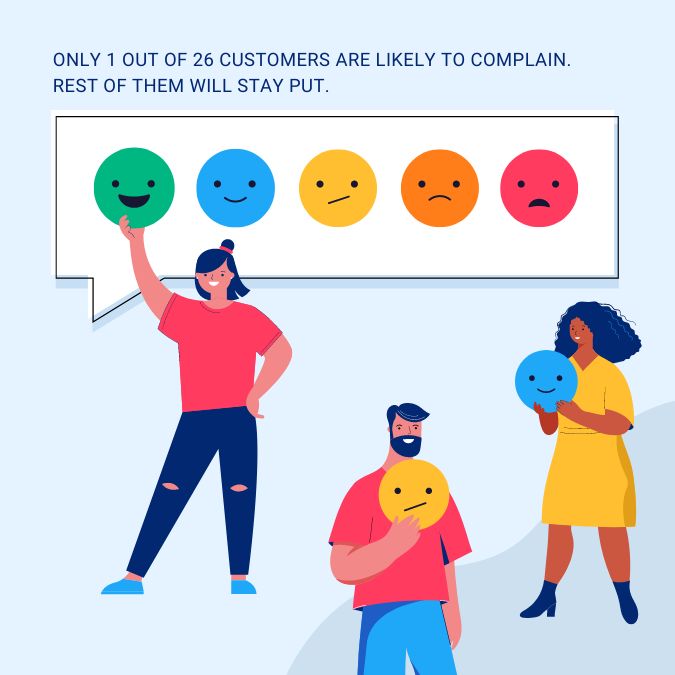
This silence can be dangerously misleading. Many companies interpret a lack of negative feedback as a sign of customer satisfaction. However, the reality is often quite different - dissatisfied customers may be sharing their poor experiences with others without ever alerting the company.
Customer expectations are at an all-time high, making it increasingly challenging for companies to consistently meet and exceed them. The margin for error is razor-thin - even if you provide excellent service 90% of the time, that one subpar experience could prove catastrophic.
How Digital Experience Drives Customer Lifetime Value
PwC's future of CX report, which surveyed 15,000 consumers, underscores the severity of this issue. It found that 1 in 3 customers would abandon a brand they love after just one negative experience. Even more alarming, 92% would completely cut ties with a company after two or three poor interactions.
What constitutes a bad experience can vary, but sometimes it's as simple as inadequate follow-up. Research indicates that many companies fail to follow up with their customers, missing a crucial opportunity to address concerns and reinforce positive experiences.
Customer churn often begins with frustration - frustration that could potentially be mitigated or avoided altogether with proactive communication and attentive follow-up strategies. By staying engaged with customers and actively seeking their feedback, companies can identify and address issues before they escalate to the point of customer loss.
Self-Service: The Preferred Customer Support Channel
Are customer experience and customer service the same?
As we approach 2024, businesses need to prioritize robust self-service options for their customers. The trend is clear: 67% of customers now prefer finding answers on their own rather than speaking directly with a company representative.
This preference for self-service is even more pronounced when it comes to online resources. An overwhelming 91% of customers say they would use an online knowledge base if it were available and tailored to their needs.
The future of customer service is increasingly automated. Gartner projects that by 2030, customer-owned bots will automatically generate a billion service tickets. This shift represents a significant change in how customers interact with businesses and seek support.
Retail Reality Check: In-Store Experiences Fall Short of Shopper Expectations
To meet this growing demand, companies are increasingly turning to Artificial Intelligence (AI). The adoption of AI in customer interactions has seen rapid growth. Just three years ago, 25% of all customer interactions were automated through AI and machine learning. Today, that figure has jumped to 40%, with no signs of slowing down.
For businesses, this trend presents both short-term and long-term imperatives. In the immediate future, it's crucial to provide customers with the right tools to solve problems independently. This might include comprehensive FAQs, interactive troubleshooting guides, or AI-powered chatbots.
Looking ahead, companies need to strategize on how AI and other emerging technologies can be leveraged to enhance the overall customer experience. This could involve more sophisticated AI-driven predictive support, personalized self-service portals, or innovative ways to blend automated and human support seamlessly.
Boosting Customer Service Without Breaking the Bank
The message is clear: self-service is no longer just an option—it's becoming the primary mode of customer support. Companies that can effectively empower their customers with intuitive, efficient self-service tools will be well-positioned to meet evolving customer expectations and streamline their support operations.
Anticipating Customer Needs: The Art of Proactive Service
While responsive customer service is valuable, anticipating customer needs takes support to a new level. This proactive approach involves addressing potential issues before customers even realize they exist.
The Great CX Dive: Why Customer Satisfaction Is in Free Fall
Most companies operate on a reactive model, waiting for customers to reach out with problems. Proactive support, however, aims to resolve issues before they escalate. It's akin to fire prevention rather than firefighting.
The contrast between reactive and proactive service is stark:
- Reactive: Responds to customer complaints
- Proactive: Identifies and solves potential problems in advance
This proactive stance aligns with customer preferences. Over 85% of customers express a desire for proactive communication from businesses. Offering solutions before customers voice concerns—or even recognize an issue—is a powerful way to cultivate customer loyalty.
What Customers Really Crave from Loyalty Programs
Conclusion
In a landscape where 9 out of 10 businesses compete on customer experience, organizations that prioritize CX will distinguish themselves and secure customer loyalty.
The key to delivering exceptional experiences lies in knowing your customers intimately. This requires developing comprehensive customer profiles that enable you to understand and measure the customer experience at every touchpoint across multiple channels.
Implementing a CRM system can be an effective way to manage this wealth of customer data.
With a deep understanding of your customers, you can personalize every interaction. In an era where customers have unprecedented power and choices, it's incumbent upon businesses to recognize and address their needs proactively.
Ensuring smooth, pleasant, and continuously improving interactions with your company will drive brand loyalty. Failing to do so risks gifting your competitors your most valuable asset – your customers.
As we move forward, the businesses that thrive will be those that not only meet but anticipate customer needs, creating experiences that resonate on a personal level and foster long-term relationships.




